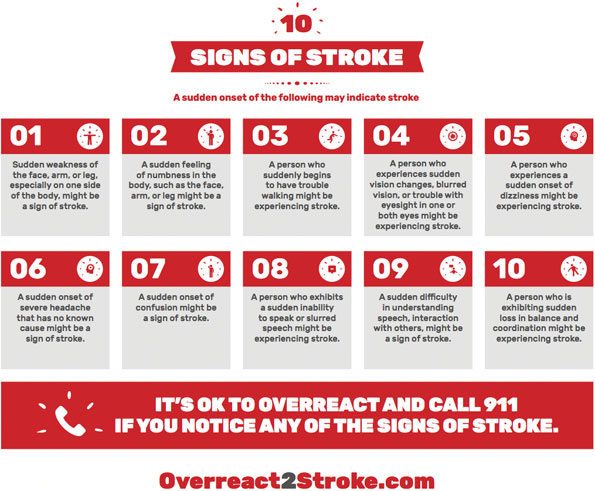May marks National Stroke Awareness Month, and this year the National Stroke Association is turning the spotlight on the modifiable risk factors that account for 90% of strokes globally. Hypertension remains the single most important modifiable risk factor, accounting for nearly 48% of strokes. With eight in 10 people experiencing their first stroke having hypertension, getting your blood pressure checked is an important step in controlling your stroke risk.
During National Stroke Awareness Month, the Palatine Fire Department is urging everyone to look at their modifiable stroke risk factors, and pledge to make at least one change to reduce their stroke risk. Risk factors include; hypertension, physical inactivity, poor diet, obesity, smoking, alcohol use, high blood fats (Lipids), stress, and diabetes.
Beyond reducing your risk for stroke, knowing the signs and symptoms of a stroke are equally important. Every 40 seconds someone in the U.S. has a stroke and around 800,000 people will have a stroke in the United States this year alone.
Stroke FAST Acronym
The acronym FAST is an easy way to identify the most common symptoms of a stroke:
F – Face: Ask the person to smile. Does one side of the face droop?
A – Arms: Ask the person to raise both arms. Does one arm drift downward?
S – Speech: Ask the person to repeat a simple sentence. Is their speech slurred?
T – Time: If you observe any of these signs, call 9-1-1 immediately.
A common misconception is that strokes occur only in older adults. Although, your stroke risk increases with
age, a stroke can happen to anyone at any time. Despite being a leading cause of adult long-term disability, and the fifth leading cause of death, less than one in five Americans can correctly classify all five stroke symptoms. The time to take action is now. This May, during National Stroke Awareness month, get to know your stroke risk factors and learn to better identify the signs and symptoms of stroke. The life you save just might be your own. For more information visit www.stroke.org.
May is #StrokeAwarenessMonth Remember to be F.A.S.T when you suspect yourself, or someone else is having a #stroke. The sooner you spot the signs, the more difference you can make to someone's recovery: https://t.co/EXgm4L26BG pic.twitter.com/OvT878RhML
— NHS England (@NHSEngland) May 1, 2019
Know the signs and symptoms of stroke–use these signs to act F.A.S.T.: https://t.co/Qzmw7qrlY8 #ThursdayThoughts #StrokeAwarenessMonth pic.twitter.com/h2Maq11EcI
— HHS.gov (@HHSGov) May 2, 2019
There are two main types of #stroke, ischaemic and haemorrhagic https://t.co/wsuO7Al5gr #StrokeAwarenessMonth pic.twitter.com/Evynoau9Nq
— Sign Against Stroke (@signagnststroke) May 3, 2019
May is #StrokeAwarenessMonth. Learn to recognise the signs of #stroke and #ActFAST. Stroke is medical emergency. pic.twitter.com/fl9COy8zsQ
— Sign Against Stroke (@signagnststroke) May 1, 2019
20240105-1435future
THANKS FOR READING CARDINAL NEWS
May is Stroke Awareness Month. #Stroke is a leading cause of disability. When stroke strikes, impacts not only individual, but their families, friends, and communities. Let’s do everything we can to prevent and treat stroke. pic.twitter.com/CTIYZYMYsU
— Brian Hoh, MD, MBA (@BrianHoh1) May 1, 2019
May is Stroke Awareness Month. #Stroke is a leading cause of death and can happen to anyone. Control your risk factors to improve your brain health. Be in the know about Stroke. pic.twitter.com/HG5pbffjth
— Fort Washington Medical Center (@FtWashingtonMC) May 1, 2019
In the US, stroke is the fifth leading cause of death. In recognition of National Stroke Awareness Month, Zynex will be sharing information on stroke awareness throughout the month of May. Also, be on the lookout for information on our stroke recovery device in upcoming posts! pic.twitter.com/mXxg3aymqk
— Zynex Medical (@ZynexMedical) May 2, 2019

